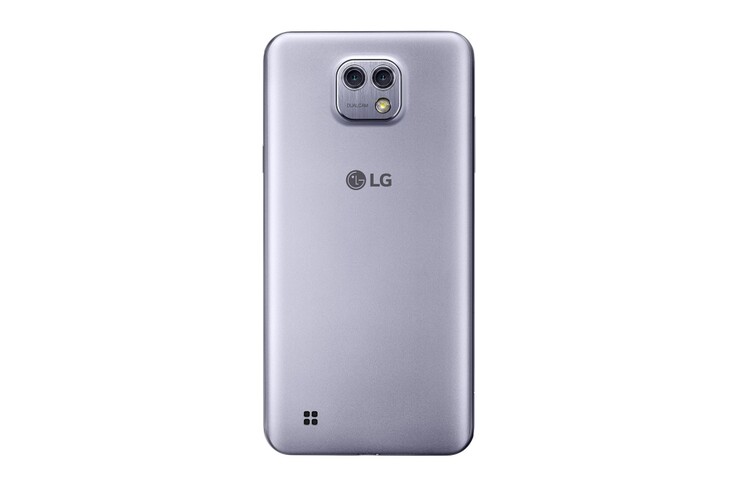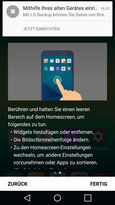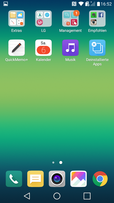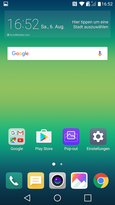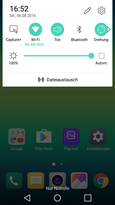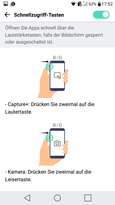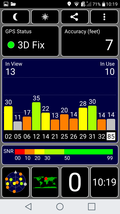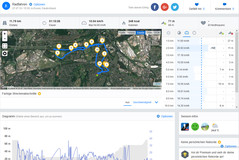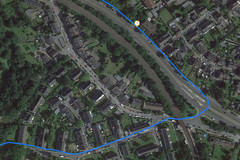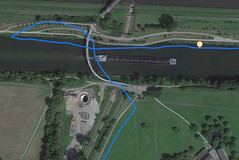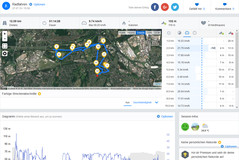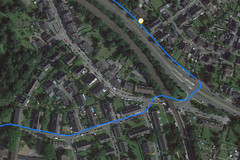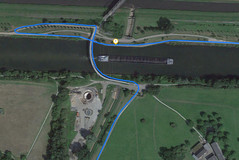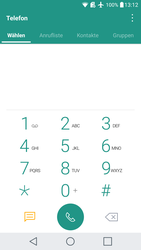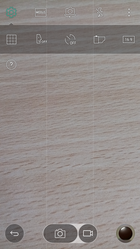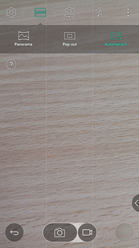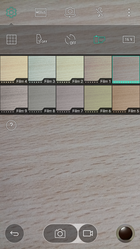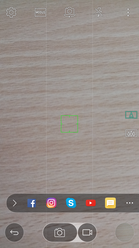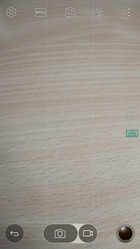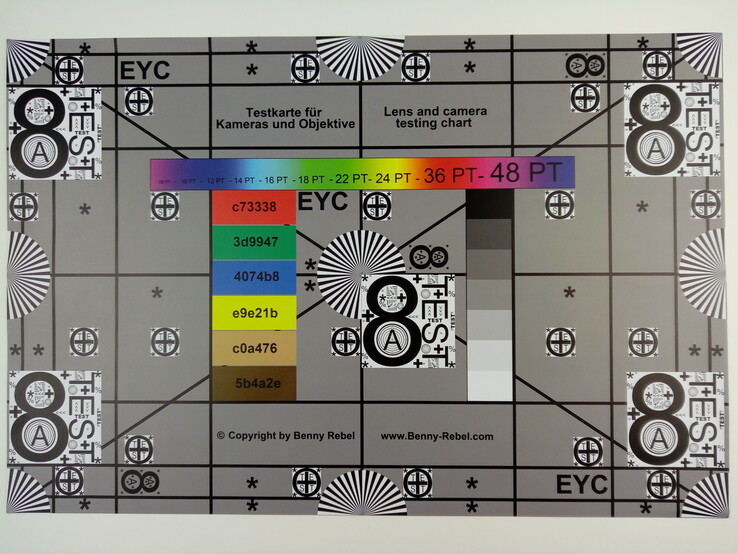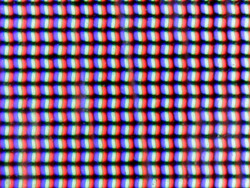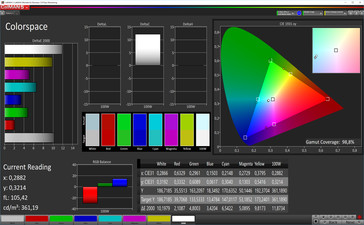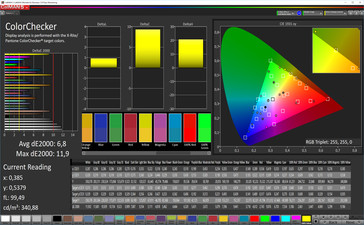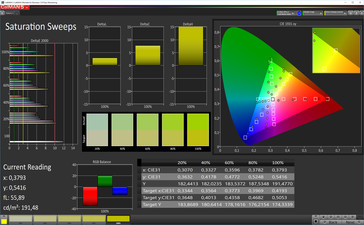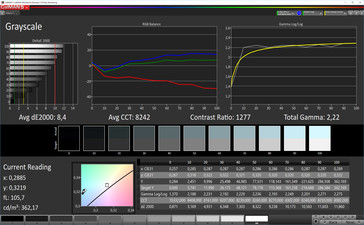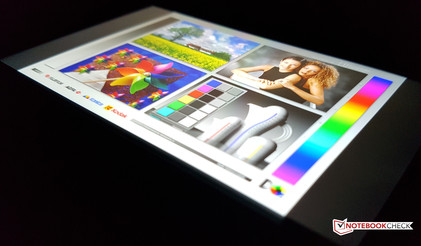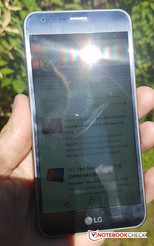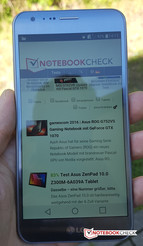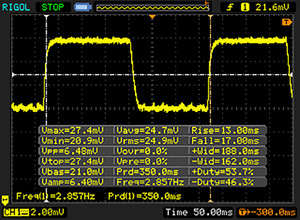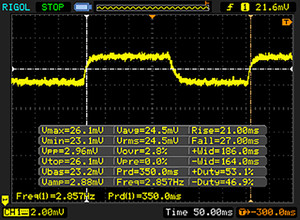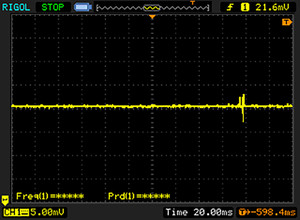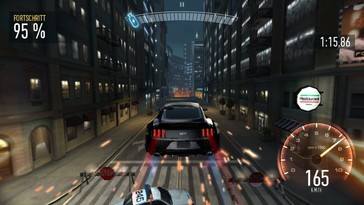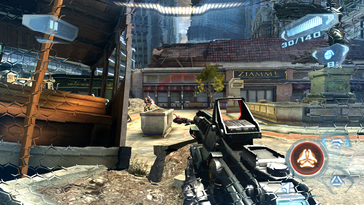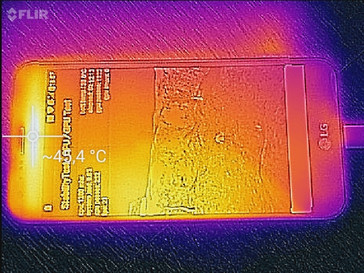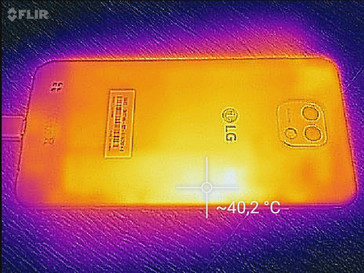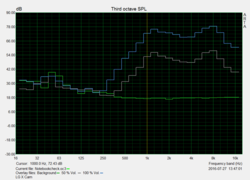LG X Cam Smartphone Review

For the original German review, see here.
Like the present G5 flagship smartphone by the Korean manufacturer, LG's X Cam module features a rear-facing dual-primary camera with two modules: A 13 MP primary camera (75 ° standard angle) and a 5 MP wide angle module. Beyond that, it has a high-resolution front-facing camera (8 MP) for selfies.
The mid-range smartphone also sports a 2500 mAh battery besides a MediaTek MT6753 octa-core processor alongside 2 GB of RAM. The internal eMMC storage has a capacity of 16 GB, which can be expanded via a micro-SD card.
At an RRP of 299 Euros (~$334), LG's X Cam finds itself in one of the most competitive smartphone sectors and the list of potential rivals is correspondingly long. We use Lenovo's Moto G4, ZTE's Blade V7, OnePlus' X, and Huawei's P9 Lite for comparison in this test. The "big brother" LG's G5 serves as the test reference.
Case
Although LG's X Cam looks as if it is made of aluminum at first glance, the mid-range smartphone's casing is plastic. LG's X Cam makes a somewhat lower quality impression than devices with a glass (OnePlus X) or metal (ZTE Blade V7) back cover. The edges around the 5.2-inch display look relatively wide. This is also reflected in the screen-surface ratio of almost 69%. Nevertheless, the just 6.9-millimeter slim smartphone is pleasant to hold with its weight of 118 grams.
The plastic casing's stability is satisfactory. Despite the slim build, wave formation only develops on the screen when high pressure is applied on the back. The incorporated plastic keys provide a good pressure point and are easy to access.
Connectivity
The 16 GB eMMC storage is not very lush in view of the focus on camera. The user has approximately 10.15 GB for personal use after deducting the operating system. At least it is possible to expand the storage via a micro-SD card by up to 2 TB, and moving compatible apps to the SD card (App2SD) is also supported.
A micro-USB 2.0 port on the handset's underside is present for recharging the smartphone. It is not possible to connect external storage devices via USB OTG. A status LED for notifications and NFC chip are further features of LG's smartphone. LG's X Cam also supports wireless media streaming: Miracast, Wi-Fi Direct, Android Beam, and DLNA. Transmitting content to an external monitor wirelessly to a Sony Android TV functioned without issues in the test.
| SD Card Reader | |
| maximum SDCardreader Maximum Transfer Rate | |
| average SDCardreader Average Transfer Rate |
Software
As to system software, LG relies on a modified user interface based on Google's latest Android version 6 Marshmallow. The manufacturer's user interface hardly looks like Google's stock Android. The app and folder design, as well as the missing app drawer (ex-factory), correspond to the Korean manufacturer's design language. The animations are also very prominent, which does not really contribute to the system's subjective performance. The latter can be disabled in the developer options. Quick access to camera and notes (Capture+) are present. Furthermore, the handset can be unlocked via the "Double-Tap-to-Wake" gesture.
Communication and GPS
LG's X Cam features Bluetooth version 4.2 and NFC (near-field communication) for wireless communication between mobile devices. Beyond that, Wi-Fi standards 802.11 b/g/n are onboard. The reception quality of the installed Wi-Fi module is decent, and the attenuation of just below -42 dBm in the (Telekom Speedport, W921V) router's direct vicinity is low. The average data transfer rates of 50 Mbit/s (transmit) and 42 Mbit/s (receive) at a distance of 1 meter to our Linksys EA8500 reference router are on a typical level for entry handsets.
The LTE smartphone accesses mobile Internet with up to 150 Mbit/s in download and 50 Mbit/s in upload (LTE Cat.4). The 800, 1800, 2600 LTE frequencies, as well as quad-band GSM and quad-band UMTS, are supported. The reception in the German D network was satisfactory in a big city.
The integrated A-GPS receiver enables mobile localization. Outdoor tracking was possible with an accuracy of approximately 2 meters. Setting up a sufficiently strong satellite signal for finding us indoors was also possible. In our practical test where the mid-range smartphone's GPS module and Garmin's Edge 500 GPS bike computer both log a route simultaneously, LG's X Cam deviated by approximately 300 meters on the roughly 12-kilometer route. The achieved accuracy is comparatively poor for a mid-range handset.
Telephone and Call Quality
LG uses its own phone app in the X Cam model. It offers common features, such as a call list and integrated phone book.
The earpiece's sound quality was unsatisfactory in the test. Our contact's voice output sounded distorted and had an echo. We performed the test calls with Skype and via the German D-network (Vodafone). In return, the microphone's voice quality was good and ensured a sufficient intelligibility at our end.
Cameras
Like LG's G5, the front-facing camera in LG's X Cam has a high resolution of 8 megapixels (2448x3264 pixels, 4:3). The lens provides satisfactory results in good light conditions. It does not have an autofocus, but it offers the option of illuminating image areas differently by tapping the screen.
The dual-camera module consists of a 75 ° standard angle camera with a resolution of 13 megapixels (4160x3120 pixels) and a 5-MP camera (2560x1920 pixels) with a wide angle of 120 °. It has an aperture of f/2.0. Photos shot in good light conditions are compelling for a mid-range handset. However, they look a bit blurry (scene 1 & 2: surroundings and woods) compared with LG's G5. Furthermore, the dynamic range in the photos is too low, which strongly dims the photos in extremely different light conditions. High image noise and a very evident blurriness increases in shots taken in low-light conditions (scene 2: street). Photos with the 5-MP wide angle camera look somewhat pale and low-contrast. Also, the lens' low-light performance is worse than that of the standard-angle primary camera.
LG's X Cam records videos in a maximum quality of 1080p at 30 FPS.
Accessories and Warranty
In addition to the smartphone, a user's manual, USB cable, and modular power supply for recharging the battery were found in the box. The manufacturer also included an in-ear headphone for LG's X Cam.
According to the warranty card, the manufacturer's warranty is 24 months from date of purchase.
Input Devices and Handling
The usual three Android onscreen buttons for "back", "multitasking", and "home screen" are used for controlling the handset. The capacitive touchscreen responds quickly and reliably. LG's own "Smart Keyboard" is preloaded ex-factory as an input option.
Display
The 5-inch LC display in LG's X Cam has a resolution of 1920x1080 pixels, which results in a pixel density of approximately 424 PPI. The available resolution ensures a sharp reproduction of displayed content in routine use.
Although the screen's maximum brightness of 362 cd/m² is sufficiently bright for most application scenarios, the rivals clearly outperform it. We determined a very similar rate of 363 cd/m² in our measurement of equally distributed bright and dark areas (APL 50).
| |||||||||||||||||||||||||
Brightness Distribution: 94 %
Center on Battery: 362 cd/m²
Contrast: 1448:1 (Black: 0.25 cd/m²)
ΔE ColorChecker Calman: 6.8 | ∀{0.5-29.43 Ø4.77}
ΔE Greyscale Calman: 8.4 | ∀{0.09-98 Ø5}
Gamma: 2.22
CCT: 8242 K
| LG X Cam IPS, 1920x1080, 5.2" | ZTE Blade V7 IPS, 1920x1080, 5.2" | Lenovo Moto G4 IPS, 1920x1080, 5.5" | OnePlus X Active Matrix OLED, 1920x1080, 5" | Huawei P9 Lite IPS, 1920x1080, 5.2" | LG G5 IPS Quantum, 2560x1440, 5.3" | |
|---|---|---|---|---|---|---|
| Screen | -21% | 12% | -3% | -6% | 25% | |
| Brightness middle (cd/m²) | 362 | 409 13% | 724 100% | 312 -14% | 505 40% | 784 117% |
| Brightness (cd/m²) | 348 | 411 18% | 723 108% | 314 -10% | 468 34% | 774 122% |
| Brightness Distribution (%) | 94 | 96 2% | 87 -7% | 91 -3% | 88 -6% | 91 -3% |
| Black Level * (cd/m²) | 0.25 | 0.38 -52% | 0.71 -184% | 0.74 -196% | 0.43 -72% | |
| Contrast (:1) | 1448 | 1076 -26% | 1020 -30% | 682 -53% | 1823 26% | |
| Colorchecker dE 2000 * | 6.8 | 9.4 -38% | 4.5 34% | 6.28 8% | 4.1 40% | 6.5 4% |
| Colorchecker dE 2000 max. * | 11.9 | 17.6 -48% | 8.4 29% | 5.8 51% | 11.7 2% | |
| Greyscale dE 2000 * | 8.4 | 11.6 -38% | 4.9 42% | 8.24 2% | 4.9 42% | 8 5% |
| Gamma | 2.22 99% | 2.25 98% | 2.44 90% | 2.12 104% | 2.5 88% | 2.22 99% |
| CCT | 8242 79% | 9597 68% | 6496 100% | 8145 80% | 7116 91% | 8699 75% |
| Color Space (Percent of AdobeRGB 1998) (%) | 68.08 | |||||
| Color Space (Percent of sRGB) (%) | 97.46 |
* ... smaller is better
Both the contrast ratio of 1448:1 and the black level of 0.25 cd/m² (APL 50: 0.26 cd/m²) are on a very good level for a mid-range handset. The analysis using a photospectrometer and CalMAN software shows relatively low shifts in color (6.8) and grayscale (8.4) reproduction. The measured color temperature of 8242 Kelvin is a bit too cool (ideal value: 6500 Kelvin) and a minor bluish tint is visible.
The very good contrast ratio of 1448:1 also ensures good legibility of the liquid crystal display outdoors. However, the screen's relatively low maximum brightness makes it difficult to recognize content in direct sunlight. The viewing angles are IPS-typical and content is displayed fairly color accurate even in very flat viewing angles.
Display Response Times
| ↔ Response Time Black to White | ||
|---|---|---|
| 30 ms ... rise ↗ and fall ↘ combined | ↗ 13 ms rise | |
| ↘ 17 ms fall | ||
| The screen shows slow response rates in our tests and will be unsatisfactory for gamers. In comparison, all tested devices range from 0.1 (minimum) to 240 (maximum) ms. » 79 % of all devices are better. This means that the measured response time is worse than the average of all tested devices (20.2 ms). | ||
| ↔ Response Time 50% Grey to 80% Grey | ||
| 48 ms ... rise ↗ and fall ↘ combined | ↗ 21 ms rise | |
| ↘ 27 ms fall | ||
| The screen shows slow response rates in our tests and will be unsatisfactory for gamers. In comparison, all tested devices range from 0.165 (minimum) to 636 (maximum) ms. » 82 % of all devices are better. This means that the measured response time is worse than the average of all tested devices (31.6 ms). | ||
Screen Flickering / PWM (Pulse-Width Modulation)
| Screen flickering / PWM not detected | |||
In comparison: 53 % of all tested devices do not use PWM to dim the display. If PWM was detected, an average of 8084 (minimum: 5 - maximum: 343500) Hz was measured. | |||
Performance
MediaTek's MT6753 installed in LG's X Cam is an ARM SoC (system on a chip) built in 28 nanometers and has 8 CPU cores based on the 64-bit capable Cortex A53 architecture. The configuration of an octa-core SoC and 2 GB of DDR3 RAM mostly ensures a smooth system and browser performance in routine use. However, the animations of LG's UI were almost annoyingly slow in our opinion. Compared with the Qualcomm competition (Lenovo Moto G4, OnePlus X), LG's X Cam is outperformed clearly in most synthetic benchmarks - Huawei's P9 Lite also offers a better processor performance than LG's handset.
The speed of the 16 GB eMMC flash memory is in line with the determined SoC performance of LG's X Cam. With exception of the read speed, the access rates clearly lag behind the other mid-range rivals. The micro-SD card slot also does not achieve the performance level of the comparison devices. We tested the speed of LG's X Cam with a Toshiba Exceria Pro M401 (max. 95 MB/s read and 80 MB/s write), and it comes in last place in the AndroBench 3 test with just 37 MB/s in read and 19 MB/s in write.
| AndroBench 3-5 | |
| Sequential Write 256KB SDCard (sort by value) | |
| LG X Cam | |
| ZTE Blade V7 | |
| Lenovo Moto G4 | |
| Huawei P9 Lite | |
| LG G5 | |
| Sequential Read 256KB SDCard (sort by value) | |
| LG X Cam | |
| ZTE Blade V7 | |
| Lenovo Moto G4 | |
| Huawei P9 Lite | |
| LG G5 | |
| Random Write 4KB (sort by value) | |
| LG X Cam | |
| ZTE Blade V7 | |
| Lenovo Moto G4 | |
| OnePlus X | |
| Huawei P9 Lite | |
| LG G5 | |
| Random Read 4KB (sort by value) | |
| LG X Cam | |
| ZTE Blade V7 | |
| Lenovo Moto G4 | |
| OnePlus X | |
| Huawei P9 Lite | |
| LG G5 | |
| Sequential Write 256KB (sort by value) | |
| LG X Cam | |
| ZTE Blade V7 | |
| Lenovo Moto G4 | |
| OnePlus X | |
| Huawei P9 Lite | |
| LG G5 | |
| Sequential Read 256KB (sort by value) | |
| LG X Cam | |
| ZTE Blade V7 | |
| Lenovo Moto G4 | |
| OnePlus X | |
| Huawei P9 Lite | |
| LG G5 | |
| AnTuTu v6 - Total Score (sort by value) | |
| LG X Cam | |
| ZTE Blade V7 | |
| Lenovo Moto G4 | |
| OnePlus X | |
| Huawei P9 Lite | |
| LG G5 | |
| Geekbench 3 | |
| 64 Bit Single-Core Score (sort by value) | |
| LG X Cam | |
| ZTE Blade V7 | |
| Lenovo Moto G4 | |
| Huawei P9 Lite | |
| LG G5 | |
| 64 Bit Multi-Core Score (sort by value) | |
| LG X Cam | |
| ZTE Blade V7 | |
| Lenovo Moto G4 | |
| Huawei P9 Lite | |
| LG G5 | |
| 3DMark | |
| 1280x720 offscreen Ice Storm Unlimited Score (sort by value) | |
| LG X Cam | |
| ZTE Blade V7 | |
| Lenovo Moto G4 | |
| OnePlus X | |
| Huawei P9 Lite | |
| LG G5 | |
| 1280x720 offscreen Ice Storm Unlimited Graphics Score (sort by value) | |
| LG X Cam | |
| ZTE Blade V7 | |
| Lenovo Moto G4 | |
| OnePlus X | |
| Huawei P9 Lite | |
| LG G5 | |
| 1280x720 offscreen Ice Storm Unlimited Physics (sort by value) | |
| LG X Cam | |
| ZTE Blade V7 | |
| Lenovo Moto G4 | |
| OnePlus X | |
| Huawei P9 Lite | |
| LG G5 | |
| 2560x1440 Sling Shot OpenGL ES 3.0 (sort by value) | |
| LG X Cam | |
| ZTE Blade V7 | |
| Lenovo Moto G4 | |
| OnePlus X | |
| Huawei P9 Lite | |
| LG G5 | |
| 2560x1440 Sling Shot OpenGL ES 3.0 Graphics (sort by value) | |
| LG X Cam | |
| ZTE Blade V7 | |
| Lenovo Moto G4 | |
| OnePlus X | |
| Huawei P9 Lite | |
| LG G5 | |
| 2560x1440 Sling Shot OpenGL ES 3.0 Physics (sort by value) | |
| LG X Cam | |
| ZTE Blade V7 | |
| Lenovo Moto G4 | |
| OnePlus X | |
| Huawei P9 Lite | |
| LG G5 | |
| GFXBench (DX / GLBenchmark) 2.7 | |
| T-Rex Onscreen (sort by value) | |
| LG X Cam | |
| ZTE Blade V7 | |
| Lenovo Moto G4 | |
| OnePlus X | |
| Huawei P9 Lite | |
| LG G5 | |
| 1920x1080 T-Rex Offscreen (sort by value) | |
| LG X Cam | |
| ZTE Blade V7 | |
| Lenovo Moto G4 | |
| OnePlus X | |
| Huawei P9 Lite | |
| LG G5 | |
| GFXBench 3.0 | |
| on screen Manhattan Onscreen OGL (sort by value) | |
| LG X Cam | |
| ZTE Blade V7 | |
| Lenovo Moto G4 | |
| OnePlus X | |
| Huawei P9 Lite | |
| LG G5 | |
| 1920x1080 1080p Manhattan Offscreen (sort by value) | |
| LG X Cam | |
| ZTE Blade V7 | |
| Lenovo Moto G4 | |
| OnePlus X | |
| Huawei P9 Lite | |
| LG G5 | |
| GFXBench 3.1 | |
| on screen Manhattan ES 3.1 Onscreen (sort by value) | |
| LG X Cam | |
| ZTE Blade V7 | |
| Lenovo Moto G4 | |
| Huawei P9 Lite | |
| LG G5 | |
| 1920x1080 Manhattan ES 3.1 Offscreen (sort by value) | |
| LG X Cam | |
| ZTE Blade V7 | |
| Lenovo Moto G4 | |
| Huawei P9 Lite | |
| LG G5 | |
| PCMark for Android - Work performance score (sort by value) | |
| LG X Cam | |
| ZTE Blade V7 | |
| Lenovo Moto G4 | |
| OnePlus X | |
| Huawei P9 Lite | |
| LG G5 | |
| JetStream 1.1 - Total Score (sort by value) | |
| LG X Cam | |
| ZTE Blade V7 | |
| Lenovo Moto G4 | |
| OnePlus X | |
| Huawei P9 Lite | |
| LG G5 | |
| Mozilla Kraken 1.1 - Total (sort by value) | |
| LG X Cam | |
| ZTE Blade V7 | |
| Lenovo Moto G4 | |
| OnePlus X | |
| Huawei P9 Lite | |
| LG G5 | |
| Octane V2 - Total Score (sort by value) | |
| LG X Cam | |
| ZTE Blade V7 | |
| Lenovo Moto G4 | |
| OnePlus X | |
| Huawei P9 Lite | |
| LG G5 | |
* ... smaller is better
Games
The Mali-T720 MP4 graphics unit integrated in MediaTek's MT6753 has four clusters that clock at up to 600 MHz. The Mali GPU renders current games from the Android Play Store, such as N.O.V.A. 3 or Need for Speed No Limits, smoothly. The touchscreen also responded quickly and accurately in the gaming test.
Emissions
Temperature
The temperatures of LG's X Cam are distributed quite evenly in idle mode. While we measured 36.8 °C on the front, the back presented a slightly lower maximum surface temperature of 34.1 °C in the test. The temperatures climbed particularly strongly in the casing's front upper third in load conditions. Since these areas remain largely untouched when holding the smartphone normally and the rates measured on LG's handset are relatively low, the waste heat will not be noticed unfavorably in routine use.
(±) The maximum temperature on the upper side is 41.6 °C / 107 F, compared to the average of 35.2 °C / 95 F, ranging from 21.9 to 247 °C for the class Smartphone.
(±) The bottom heats up to a maximum of 40.4 °C / 105 F, compared to the average of 34 °C / 93 F
(±) In idle usage, the average temperature for the upper side is 34.4 °C / 94 F, compared to the device average of 32.9 °C / 91 F.
Speaker
The rear-sided speaker is sufficiently loud with almost 85 dB(A), but the playback quality makes a tinny impression when increasing the volume. The sound impression is not really very linear in the audible range - basses are not perceptible. The playback quality of the mono speaker in LG's handset could not convince us.
The 3.5-mm jack can be used alternatively for a better sound experience.
LG X Cam audio analysis
(+) | speakers can play relatively loud (85 dB)
Bass 100 - 315 Hz
(-) | nearly no bass - on average 38.8% lower than median
(±) | linearity of bass is average (7.7% delta to prev. frequency)
Mids 400 - 2000 Hz
(±) | reduced mids - on average 10% lower than median
(±) | linearity of mids is average (12.3% delta to prev. frequency)
Highs 2 - 16 kHz
(±) | higher highs - on average 8.7% higher than median
(+) | highs are linear (5.6% delta to prev. frequency)
Overall 100 - 16.000 Hz
(-) | overall sound is not linear (34.9% difference to median)
Compared to same class
» 85% of all tested devices in this class were better, 1% similar, 14% worse
» The best had a delta of 11%, average was 35%, worst was 134%
Compared to all devices tested
» 93% of all tested devices were better, 1% similar, 6% worse
» The best had a delta of 4%, average was 24%, worst was 134%
ZTE Blade V7 audio analysis
(+) | speakers can play relatively loud (85.3 dB)
Bass 100 - 315 Hz
(-) | nearly no bass - on average 46.6% lower than median
(+) | bass is linear (3% delta to prev. frequency)
Mids 400 - 2000 Hz
(±) | reduced mids - on average 11% lower than median
(±) | linearity of mids is average (12.1% delta to prev. frequency)
Highs 2 - 16 kHz
(+) | balanced highs - only 3% away from median
(+) | highs are linear (3.2% delta to prev. frequency)
Overall 100 - 16.000 Hz
(-) | overall sound is not linear (32.1% difference to median)
Compared to same class
» 82% of all tested devices in this class were better, 2% similar, 16% worse
» The best had a delta of 11%, average was 35%, worst was 134%
Compared to all devices tested
» 91% of all tested devices were better, 2% similar, 7% worse
» The best had a delta of 4%, average was 24%, worst was 134%
Lenovo Moto G4 audio analysis
(+) | speakers can play relatively loud (86.6 dB)
Bass 100 - 315 Hz
(-) | nearly no bass - on average 24.6% lower than median
(±) | linearity of bass is average (10.2% delta to prev. frequency)
Mids 400 - 2000 Hz
(+) | balanced mids - only 4.4% away from median
(+) | mids are linear (4.7% delta to prev. frequency)
Highs 2 - 16 kHz
(+) | balanced highs - only 3.4% away from median
(+) | highs are linear (3.1% delta to prev. frequency)
Overall 100 - 16.000 Hz
(±) | linearity of overall sound is average (18.6% difference to median)
Compared to same class
» 21% of all tested devices in this class were better, 9% similar, 70% worse
» The best had a delta of 11%, average was 35%, worst was 134%
Compared to all devices tested
» 41% of all tested devices were better, 8% similar, 51% worse
» The best had a delta of 4%, average was 24%, worst was 134%
Huawei P9 Lite audio analysis
(+) | speakers can play relatively loud (88.4 dB)
Bass 100 - 315 Hz
(-) | nearly no bass - on average 31% lower than median
(±) | linearity of bass is average (9.2% delta to prev. frequency)
Mids 400 - 2000 Hz
(+) | balanced mids - only 4.4% away from median
(+) | mids are linear (4.2% delta to prev. frequency)
Highs 2 - 16 kHz
(±) | higher highs - on average 5.2% higher than median
(+) | highs are linear (2.2% delta to prev. frequency)
Overall 100 - 16.000 Hz
(±) | linearity of overall sound is average (21% difference to median)
Compared to same class
» 39% of all tested devices in this class were better, 8% similar, 53% worse
» The best had a delta of 11%, average was 35%, worst was 134%
Compared to all devices tested
» 57% of all tested devices were better, 7% similar, 36% worse
» The best had a delta of 4%, average was 24%, worst was 134%
Frequency diagram in comparison (checkboxes can be checked/unchecked!)
Value 2: Pink Noise 100% Vol.; Value 1: Audio off
Energy Management
The power consumption of LG's X Cam is midfield among our comparison devices - only OnePlus' X presents a much better energy management. The very similarly configured ZTE's Blade V7 (SoC, display's pixel density) only has marginally better total consumption rates.
| Off / Standby | |
| Idle | |
| Load |
|
Key:
min: | |
| LG X Cam 2500 mAh | ZTE Blade V7 2540 mAh | Lenovo Moto G4 3000 mAh | OnePlus X mAh | Huawei P9 Lite 3000 mAh | |
|---|---|---|---|---|---|
| Power Consumption | 2% | -34% | 23% | -26% | |
| Idle Minimum * (Watt) | 0.64 | 0.73 -14% | 0.65 -2% | 0.6 6% | 0.73 -14% |
| Idle Average * (Watt) | 1.38 | 0.92 33% | 1.89 -37% | 0.91 34% | 2.09 -51% |
| Idle Maximum * (Watt) | 1.43 | 0.93 35% | 1.92 -34% | 1.12 22% | 2.11 -48% |
| Load Average * (Watt) | 3.99 | 4.47 -12% | 5.28 -32% | 3.04 24% | 4.15 -4% |
| Load Maximum * (Watt) | 4.49 | 5.96 -33% | 7.45 -66% | 3.2 29% | 5.05 -12% |
* ... smaller is better
Battery Runtime
LG's X Cam achieves a good rate of 7 hours and 37 minutes in our practical Wi-Fi test (screen brightness set to 150 cd/m², energy-saving profile). However, the 2500 mAh battery provides relatively short runtimes compared with the rivals from the medium price range.
LG's handset needs almost 3 hours to fully recharge a completely drained battery with the included 5-watt power supply.
| LG X Cam 2500 mAh | ZTE Blade V7 2540 mAh | Lenovo Moto G4 3000 mAh | OnePlus X mAh | Huawei P9 Lite 3000 mAh | |
|---|---|---|---|---|---|
| Battery runtime | |||||
| WiFi v1.3 (h) | 7.6 | 8.7 14% | 11.6 53% | 9.2 21% | 10.1 33% |
Pros
Cons
Verdict
The X Cam mid-range model by LG scores in our test with a high-contrast Full HD IPS panel and its good handling. It is well-built but only offers a cheap-feeling plastic casing for this price range - the mid-range competition made of glass (OnePlus' X) or metal (ZTE's Blade V7) make a much higher-quality impression.
Compared with the competition, LG's X Cam offers too little for its present price of approximately 280 Euros (~$313). However, it could still be an interesting alternative for some buyers when the market develops accordingly (price reduction) - but not really at the current purchase price in our opinion.
The handset's highlight and name-giving feature is the rear-facing dual-camera, comprised of a standard (75 °) and a 120 ° wide angle module. The photo quality of both cameras is good but is clearly inferior to that of LG's G5 (also furnished with a dual-camera) - at an RRP of 300 Euros (~$335), LG certainly could have installed a lens equal to that of its current flagship handset as the mid-range smartphone's unique selling point.
Compromises also have to be made in processor performance. MediaTek's SoC in LG's X Cam cannot compete with the performance of other mid-range smartphones - the same is true for the speed of the 16 GB eMMC flash memory. Furthermore, the sound quality of the speaker installed in LG's X Cam is not particularly compelling.
LG X Cam
- 08/23/2016 v5.1 (old)
Marcus Herbrich




